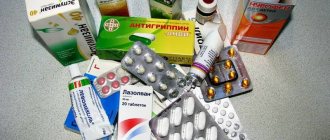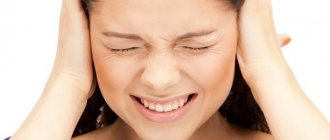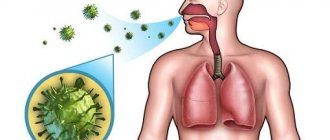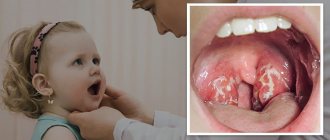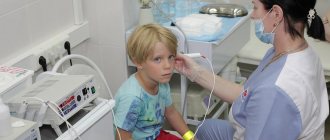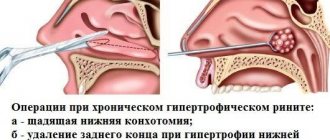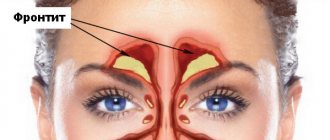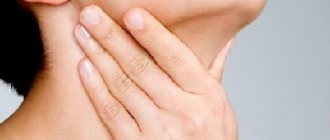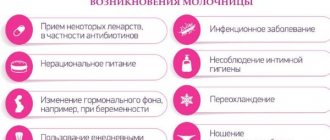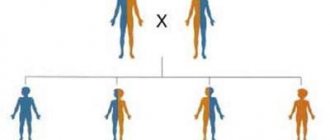Otitis is a group of inflammatory diseases of the ear.
The ear consists of three parts.
- The outer ear is represented by the pinna and the external auditory canal. When the outer ear becomes inflamed, otitis externa .
- The middle ear borders the outer ear through the tympanic membrane and is represented by the tympanic cavity and the auditory ossicles (incus, malleus and stapes). When the middle ear becomes inflamed, otitis media . When people talk about otitis media, they most often mean inflammation of the middle ear.
- The inner ear consists of the bony and membranous labyrinths, and when it becomes inflamed, internal otitis or labyrinthitis occurs. Otitis media is usually observed in children.
General information
Otitis media is an inflammatory process that develops in the middle ear . The middle ear is the small space that is located between the inner ear and the eardrum. As a rule, pain occurs in a person’s ear due to the development of otitis media or otitis externa (that is, inflammation of the outer ear).
But experts advise that if pain in the ear appears, you should still contact a specialist and undergo an examination, since such pain can also be provoked by other, more serious diseases, as well as the development of tumors in different parts of the hearing organ. Otitis media predominantly develops in preschool children.
Otitis media in children occurs more often due to the fact that the structure of the middle ear in a child predisposes to the development of an infectious process. According to medical statistics, approximately 90% of preschoolers by the age of seven already had otitis media. It is extremely important to treat otitis media correctly so that your child does not end up developing more serious complications.
Diagnosis of the disease
Symptoms of otitis in adults are quite characteristic; the diagnosis is made on the basis of complaints and external examination. In the case of a child, it is important to study the medical history and determine the root cause of the disease. In addition, visual diagnosis allows you to identify bullae on the outer and inner sides of the ear.
To identify the pathogen and confirm the diagnosis, clinical studies are prescribed:
- enzyme immunoassay blood test, ELISA;
- polymerase chain reaction, PCR;
- smear of the contents of the bull.
If otitis media is accompanied by hearing impairment and neurosensory disorders, additional diagnostics are performed:
- acumetry – checking the degree of hearing impairment using sound waves;
- audio tests - hearing testing using live speech;
- impedance measurement - exposure of the middle ear area to air pressure;
- otomicroscopy - a thorough examination of the ear canal under a microscope;
- X-ray of the temporal zone - identification of intracranial complications, in particular meningitis, mastoiditis, brain abscess.
The listed procedures are important not only for determining hearing loss, but also for preventing irreversible damage to the eardrum and differentiating it from similar ENT pathologies. Early comprehensive diagnosis allows you to choose the right treatment.
Types of otitis media
There are different degrees of severity of otitis media. In acute otitis media, the inflammatory process develops as a result of exposure to a viral infection. In most cases, a person simultaneously experiences an upper respiratory tract infection. With this condition, the patient constantly feels a certain discomfort in the ear and its congestion.
If bacteria enter the middle ear, which is always sterile under normal conditions, then gradually pus begins to accumulate in it, which puts pressure on the walls of the middle ear. In this case we are talking about purulent (bacterial) otitis media . Very often, viral otitis media gradually turns into a purulent form. The latter is most often observed in children. It is important to distinguish between these conditions, since with bacterial otitis, treatment of this disease involves taking antibiotics . At the same time, with a viral form of otitis, antibiotics will not bring relief to the patient. Antibiotic therapy for purulent bacterial otitis is important to prevent the occurrence of various complications. Indeed, in the absence of adequate therapy, pus through the eardrum can enter the patient’s external auditory canal and provoke the development of purulent mastoiditis . Another very dangerous disease that can develop as a consequence of improper treatment of purulent otitis is otogenic meningitis , in which an inflammatory process of the lining of the brain develops.
There is another type of otitis - exudative otitis media . This form of the disease is serous or sectoral otitis media. The disease manifests itself as a consequence of blockage of the lumen of the auditory tube and a subsequent decrease in pressure in the tympanic cavity. The cause of this form of the disease is a viral infection or a bacterial infection.
In some cases, fluid accumulates in the tympanic cavity, and as a result, conductive hearing loss develops. Over some time (several weeks or months), the density of fluid in the middle ear increases, therefore, the conductive type of hearing loss worsens. In this condition, the patient needs to undergo a special operation - myringotomy , in which an incision is made in the eardrum and a small tube is inserted into the middle ear.
If a patient develops chronic purulent otitis media , then a hole appears in the eardrum and an active infectious process occurs. It lasts for several weeks. Throughout this time, the patient experiences otorrhea - the appearance of purulent discharge from the ear.
In some cases, very little pus is released, so it can only be seen under a microscope. With this form of the disease, the patient's hearing deteriorates greatly.
Otitis ear in children
Otitis in adults is a rare occurrence compared to the same disease in children. It's all about the weakness of the child's immune system. For this reason, children develop infections in the upper respiratory tract. Also, some features of their auditory tubes provoke a dangerous situation - stagnant processes often occur.
It is important to thoroughly and completely cure otitis media in childhood. If treated incorrectly, it becomes a chronic disease, and then the person is bothered by periodic outbreaks all his life. Also, untreated otitis media can cause partial hearing loss. This leads to impaired mental development of children.
Causes of otitis media
In most cases, otitis media develops in combination with viral respiratory diseases . The development of an infection in the nasal cavity after some time can take over the auditory tubes , since their openings open on the back wall of the nasopharynx in the nose. Inflammation provokes the development of edema in the lumen of the auditory tubes, which, in turn, causes a violation of the equalizing pressure in them. As a result, a person constantly feels a certain congestion in the ears.
The infection can end up in the tympanic cavity, penetrating there in other ways: due to trauma , as well as the meningogenic route, spreading to the middle ear through the entire ear labyrinth system. Most rarely, the infection enters the middle ear the hematogenous route, that is, through the blood .
General signs
The labyrinth is part of the human spatial orientation system. When an organ is damaged, a person experiences disturbances in the balance system. They appear in:
- nausea;
- vomiting;
- dizziness;
- imbalance;
- movement coordination disorder.
Signs can accompany a person constantly or appear with a sudden change in body position: turning the head, bending, changing positions from sitting to lying. This is explained by the fact that the brain receives distorted data, since information from one ear arrives instantly and in full, but from the patient it does not correspond to the first and may come late. Dissonance provokes nausea and dizziness.
Inflammation in the ear causes the following sensations:
- hearing loss;
- noise in ears;
- discharge and pain during purulent inflammation.
Nausea and dizziness can be caused not only by otitis media, as well as hearing problems. Similar symptoms are present with tumors, strokes, and problems with cerebral vessels. To accurately determine the diagnosis, additional research is necessary.
Symptoms of otitis media
Otitis media in the patient develops gradually, and various symptoms are observed. Initially, the patient develops acute catarrhal otitis, in which symptoms gradually increase, arising as a consequence of the accumulation of fluid in the middle ear cavity.
Subsequent symptoms of otitis media are caused by the appearance and accumulation of pus in the middle ear cavity. After this, the eardrum ruptures and pus leaks out.
At the recovery stage of the disease, inflammation gradually decreases, suppuration stops, and the edges of the eardrum fuse.
At the first stage of the disease, a person mainly complains of severe pain in the ear, a feeling of fullness and loud noise. Pain in the ear can be very varied, but most pain is felt in the depths of the ear. It can be stabbing, pulsating, drilling, and periodically shooting. Painful sensations cause the patient very severe torment, completely depriving him of peace. Typically, the pain becomes intense at night. Accordingly, a person suffering from acute otitis media is practically unable to sleep. The pain can radiate to the head, teeth, and becomes stronger when swallowing or when a person sneezes or coughs. With otitis media, the patient's hearing is noticeably reduced due to the inflammatory process. In addition, there is general weakness, appetite disappears, and body temperature sometimes rises to 39 degrees.
When examining the patient, the doctor pays attention to swelling and redness of the eardrum. There may be pain when palpating the mastoid area.
The second stage of the disease, which is characterized by pus and rupture of the eardrum and suppuration, begins approximately on the third day after the onset of the disease. At this time, the person notices that the pain becomes much less intense, the general condition improves, and body temperature returns to normal. If at this time there is no arbitrary perforation of the eardrum, then to open it the doctor makes a small puncture. If such a puncture, which is called paracentesis , is performed in a timely manner, the person recovers faster, while hearing is restored and there are no complications of the disease.
If otitis media of the middle ear proceeds normally, then recovery follows, during which inflammation subsides and the rupture of the eardrum gradually disappears. As a rule, the disease is completely cured in about two to three weeks. By this time, the person’s hearing has completely returned to normal.
Treatment
When treating a limited form of external otitis, the following is used:
- Treatment of affected skin with silver nitrate.
- Insertion into the ear canal of a turund made of cotton wool impregnated with antibacterial ointment (flucinar, triderm, etc.)
- Instillation of drops containing an antibiotic (ofloxacin, etc.).
- Analgesics are prescribed to relieve pain.
- For multiple boils, systemic antibiotics are prescribed.
Treatment of diffuse otitis is carried out according to the following scheme:
- Antibiotics and antihistamines are prescribed.
- If necessary, immunomodulators will be used.
- Local administration of turunda with Burov's liquid and antibacterial ointments is prescribed. Instillation of drops containing antibiotics.
If otitis media has a fungal etiology, antibiotics are replaced with antimycotic drugs.
Treatment with traditional methods
Home remedies for treating otitis externa include:
- Applying a baked onion or plantain leaf to the inflamed area.
- Warming up with dry heat. To do this, fill a canvas bag with coarse salt, preheated in the oven.
- You can instill a warm decoction of bay leaves into the sore ear, prepared from a glass of water and five leaves of bay tree.
Diagnosis of otitis media
If you suspect the development of an ear disease, you should immediately visit an ENT specialist or call a doctor at home if a small child is worried and complains of pain in the ear.
Initially, the doctor finds out what general symptoms a person has. After this, the specialist performs an examination, otoscopy and palpation. During the examination, he must note the presence or absence of some characteristic features (the presence of paresis of the facial nerve, the temperature and condition of the mastoid area, swelling of the skin over it, the condition of the lymph nodes that are located near the ears, etc.).
Carrying out otoscopy in infants and newborns is complicated by the fact that the external auditory canal is very narrow, and the eardrum has an almost horizontal position. Consequently, the doctor must take into account these and other features during the examination and can assess the condition of only the upper parts of the child’s eardrum.
If possible, the patient's hearing function is also examined during the diagnosis process. It is also important to determine the mobility of the eardrum.
To establish a diagnosis, the patient undergoes a blood test: with otitis, there is an increased ESR, leukocytosis with a shift to the left. An X-ray examination is prescribed only if the patient is suspected of having complications .
The most indicative in the process of establishing a diagnosis is the release of pus when the eardrum ruptures. Sometimes a special puncture is performed to release pus. But in the absence of pus, the development of otitis media also cannot be excluded, since it is quite possible that it has not yet appeared.
Malignant otitis externa
Malignant otitis externa is an infection that affects the temporal bone and external auditory canal.
This pathology is quite rare, but it is the most serious complication of external otitis and leads to serious consequences for the entire body.
Therefore, it is worth highlighting some features of the appearance of this disease:
- More often appears in older age.
- It is observed in countries with warm and humid climates.
- The risk of developing pathology increases if the patient has serious concomitant diseases (diabetes mellitus, AIDS).
In the clinic, this disease is characterized by prolonged, intense pain in the ears, hearing loss, otorrhea with a strong unpleasant odor, and sometimes paralysis of the facial nerve. In order to differentiate malignant otitis externa from oncology, a biopsy is used.
Antibacterial drugs (ceftazidime, ciprofloxacin, penicillin antibiotics) are used for medicinal purposes. The duration of treatment ranges from 4-17 weeks. Even if the symptoms of malignant otitis externa have passed, in no case should you stop the course of treatment, since the risk of relapse is very high!
Prevention of otitis media
The development of otitis media is especially often a consequence of the common cold. Therefore, any manifestation of a cold should be properly treated. To prevent the transition of otitis media to a purulent form, it is important to promptly treat all diseases that are associated with purulent processes - sinusitis , runny nose. Sometimes, to prevent the process from worsening, it is necessary to remove adenoids that grow in the pharynx. You should teach your child to blow his nose correctly, closing his nostrils one at a time. However, the most important thing is to immediately consult a specialist if you have certain symptoms.
Causes of pathology
It is typical for labyrinthitis to develop against the background of other diseases. If you are concerned about inflammation of the inner ear, the reasons for its occurrence may be that the patient has otitis media, acute respiratory viral infection, or influenza infection.
Sometimes the disease appears against the background of:
- head injuries;
- severe infections (tuberculosis, syphilis, meningitis);
- diseases more often detected in children (measles, mumps).
If the inflammatory process is provoked by infections, it becomes bilateral. This pathology is dangerous due to gradual deterioration of hearing or absolute deafness.
Complications of otitis media
If otitis media is not treated at all or the wrong therapy is prescribed, the disease can lead to the manifestation of a purulent form of otitis in just a few days. In turn, the consequence of purulent otitis is often a rupture of the eardrum, a pathological process that affects the auditory nerve. As a result, there is a noticeable decrease in hearing. Among the most serious complications of otitis media is mastoiditis . With this disease, an inflammatory process occurs in the mucous membrane of the mastoid cells. If such a complication develops, the patient must undergo urgent surgical intervention. If the pus that accumulates during the progression of otitis media penetrates into the cranial cavity, then this condition is life-threatening. In cases of purulent meningoencephalitis, a high mortality rate is observed. Therefore, to prevent the complications described above, it is necessary to carefully treat otitis media, guided by the prescriptions of a specialist. If the approach to therapy is incorrect, then such a situation is fraught with the transition of otitis to a chronic form. Chronic otitis media is much more difficult to treat, and the patient may eventually lose hearing. If a patient wants to completely cure chronic otitis, he most often needs to undergo a complex surgical operation.
In addition, complications of otitis media can include labyrinthitis , brain abscess , and sepsis .
Antibiotics in the treatment of internal otitis
Internal otitis, or labyrinthitis, is an inflammatory process in the inner ear. This type of otitis is rare but serious; most often it is caused by a complication of acute or chronic otitis media. Less commonly, the condition is a consequence of an infectious disease or severe injury. The infection enters through the middle ear, meninges, or blood.
At the very beginning, the symptoms look like this:
- noise in ears;
- dizziness;
- nausea;
- vomit;
- hearing impairment.
If you suspect internal otitis, you should consult a doctor as soon as possible. If the diagnosis is confirmed, this will help preserve hearing, avoid the disease progressing to the chronic stage and other more serious consequences.
The following drugs are used in treatment:
- Amoxicillin. An effective antibiotic for bacterial infections of the ear and inflammation. It is prescribed exclusively by an otolaryngologist when ear drops or ointments do not give a positive result. Main indications: purulent otitis media, severe inflammation, presence of purulent discharge. With the help of the drug, the patient's condition should improve within a couple of days. It belongs to the group of penicillins and has a wide spectrum of action, eliminating harmful bacteria from the inside. During pregnancy and the lactation period, Amoxicillin should not be used if allergy symptoms are detected: rash, hives, itching or redness - you should immediately stop taking the drug. Adults are prescribed 500-875 mg of the drug, depending on the course of otitis media. After recovery, it is recommended to continue taking it for another three days.
- Clarithromycin. An antibiotic of the macrolide group, available in the form of tablets and solution for injection. Excellent for patients who cannot tolerate penicillin, as well as in the absence of the latter’s effectiveness in the treatment of otitis. It has a local anti-inflammatory effect and is especially effective in the treatment of chronic infections. Adults are recommended to take 250 mg of antibiotic every 12 hours for 10 days; in particularly difficult situations, the dose may need to be increased to 500 mg. The drug is prohibited in the 1st trimester of pregnancy, during lactation, and cannot be taken simultaneously with cisapride, pimozide and terfenadine. In the 2nd and 3rd trimesters, a doctor's permission is required. Patients with renal or hepatic impairment should be treated with Clarithromycin with caution. Side effects include: headache, anxiety, insomnia, allergies, etc.
- Piperacillin. In case of labyrinthitis, the drug is often administered by drop method. It is a semi-synthetic penicillin antibacterial agent in combination with tazobactam. The latter helps to increase the effectiveness of penicillin against strains that exhibit resistance to it. In patients over 12 years of age and weighing more than 50 kg, the dosage is 2.5-4.5 g at a time, three to four times a day. Children under 12 years of age or people weighing less than 50 kg require no more than 90 mg per 1 kg of body weight every six hours. Since there is no accurate data on the safety of the drug during pregnancy and lactation, its use is extremely undesirable and may pose a threat.
- Erythromycin. The drug is available in different forms: tablets, ointments, lyophilisate. It is used in the treatment of various infectious and inflammatory diseases, as well as as a prophylactic against infectious complications during surgical procedures. The medicine is prohibited during: pregnancy, especially in the form of tablets, breastfeeding, hearing loss, intolerance to erythromycin, concurrent use of astemizole and terfenadine. Patients suffering from kidney or liver diseases must undergo treatment under the supervision of a physician. Dosage for adults – 1-2 g per day, up to 0.5 g at a time, with the permission of the doctor can be increased to 4 g. The interval should be six hours. The ointment is used several times a day.
It should be noted that in some cases, labyrinthitis requires not only treatment with antibacterial agents, but also the additional use of vestibulolytics - drugs that help restore coordination of movements, eliminate dizziness and nausea.
Under no circumstances should you exceed the prescribed dosage or take antibiotics longer than prescribed, in the hope that this will give a better effect. An overdose can be extremely dangerous. If the medicine does not give positive dynamics, you need to contact a specialist again, who will prescribe another remedy.
List of sources
- Otorhinolaryngology. National leadership. M.: Geotar-Media, 2008;
- Bogomilsky MR Minosyan VS. Acute otitis media. Guidelines. M. 2002;
- A.Yu.Ovchinnikov, V.M. Svistushkin. Inflammatory diseases of the external and middle ear. Principles of drug therapy. - M.: Etalon, 2006;
- Dmitriev N. S., Mileshina N. A., Kolesova L. I. Exudative otitis media: Methodological recommendations. Moscow. 1996;
- Savenko I.V. Exudative otitis media. SPb.: Dialogue. 2010.
Complications and preventive measures
As a rule, if you start treating the disease on time, treatment of acute purulent otitis, exudative or inflammation of any other kind, you can avoid any complications.
However, if treatment is not carried out and the disease progresses, the diagnosis can become chronic. The most serious consequences are: meningitis, encephalitis, brain abscess, facial neuritis, hearing loss. But these dangerous conditions can only appear when patients persistently neglect treatment for otitis media.
Preventive measures include the fight against existing foci of inflammation in the body, competent and timely treatment of ENT diseases, proper ear hygiene and, of course, strengthening the immune system.
